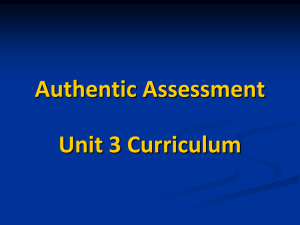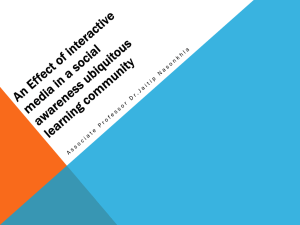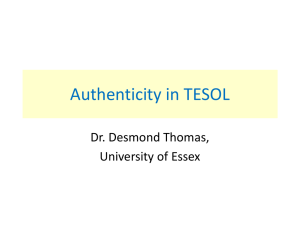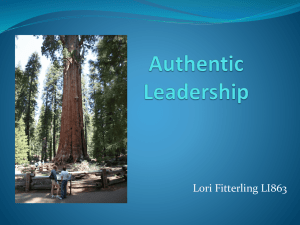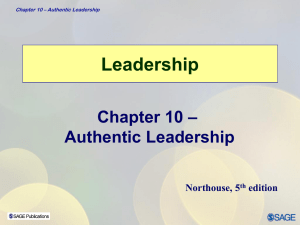Credibility is the foundation of leadership
advertisement
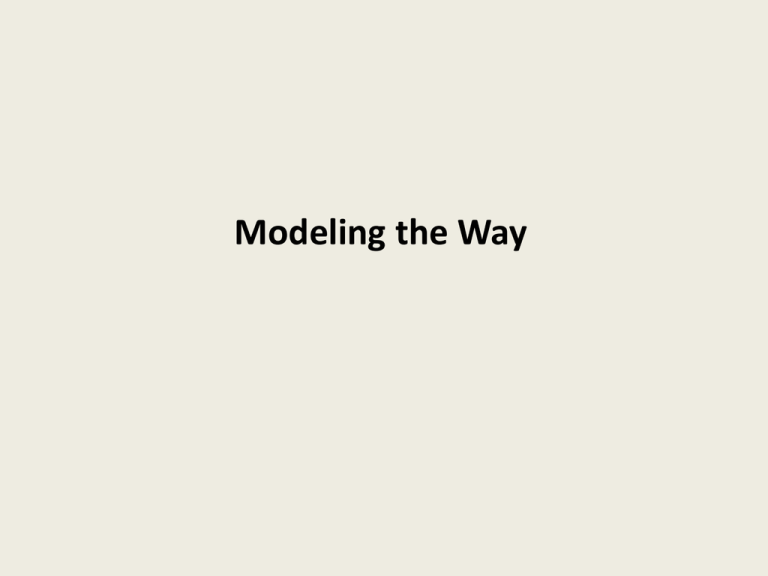
Modeling the Way Employees operate under growing conditions of uncertainty and stress …as such it is critical that leaders step in to ‘model the way’ Values are a critical aspect of leaders’ ability to model the way As a first step, leaders need to determine what is important to them and what their own values are…the path that they wish to take A critical aspect of this is discovering what they care about, finding their voice Knowing your “inner territory,” what you value, makes you a stronger leader because it allows you to act with integrity as your values guide your actions When a leader’s actions are guided by values s/he is able to achieve authenticity as a leader When leaders have clarity on their personal values they experience and demonstrate a greater sense of commitment to value-aligned action and those with whom they work An equally important step is to create a sense of shared values among employees Values need to be forged, not forced Effective leaders do not impose their values on employees, they find a way to integrate their personal values with those of their employees to forge a common value system Leaders need to model the shared values…. Leaders illustrate what the values ‘look like’ in the organizational context Leaders model values by: How they spend their time The language they use The types of questions they ask The types of feedback they seek Leaders teach values by: Confronting critical incidents Telling stories that exemplify values Visibly demonstrating valueconsistent behavior Storytelling is one of the most effective tools at a leaders disposal… Why? Storytelling is one of the most effective tools at a leaders disposal… Why? Stories are easy to remember People relate to stories Stories demonstrate values in a way that is meaningful People learn more effectively through stories What questions should you be asking if you want people to focus on …… • Continuous Improvement • Quality • Innovation • Integrity • Teamwork • Collaboration • Personal Responsibility • Customer /Client Satisfaction • Trust • Growth • Communication Authentic Leadership Authentic Leadership Description • Authentic Leadership – focuses on whether leadership is genuine • Interest in Authentic Leadership – Increasing in recent times due to social upheavals – People longing for trustworthy leaders – Identified earlier in transformational leadership research but not studied separately – Needed evidence-based research of construct Definition of Authentic Leadership “A pattern that draws upon and promotes both positive psychological capacities and a positive ethical climate, to foster greater selfawareness, an internalized moral perspective, balanced processing of information, and relational transparency on the part of leaders working with followers, fostering positive self-development.” Walumbwa, Avolio, Gardner, Wernsing & Peterson, 2008 Basic Model of Authentic Leadership • FOUR COMPONENTS: – Self-awareness • Reflecting on one’s core values, identity, emotions, motives • Being aware of and trusting your own feelings – Internalized moral perspective • Self-regulatory process using internal moral standards to guide behavior – Balanced processing • Ability to analyze informational objectively and explore other people’s opinions before making a decision - Relational transparency • Being open and honest in presenting one’s true self to others Practical Approaches to Authentic Leadership • Bill George (2003, 2007) – Leader characteristic model – Leaders have genuine desire to serve others – Five characteristics of Authentic Leaders • Understand their purpose • Strong values • Trusting relationships • Self-discipline • Act from the heart (mission) Practical Approaches to Authentic Leadership • Robert Terry (1993) – Action-centered model – Leaders should strive to do what is right – Two core leadership questions: • What is really, really going on? • What are we going to do about it? – Developed Authentic Action Wheel to help leaders frame problems • Locate the problem on the diagnostic wheel • Strategically select an appropriate response to the problem Strengths • Fulfills society’s expressed need for trustworthy leadership. Fills a void in an uncertain world. • Provides broad guidelines for those who want to become authentic leaders. Both practical and theoretical approaches provide a map. • Like transformational and servant leadership, AL has an explicit moral dimension. • Unlike traits that only some people exhibit, everyone can learn to be more authentic. • Can be measured using an established instrument (ALQ). Criticisms • The theory is still in the formative stages, so some concepts in the practical approaches are not fully developed or substantiated. • The moral component of AL is not fully explained. It’s unclear how higher values such as justice inform authentic leadership. • The rationale for including positive psychological capacities as a part of AL has not been clearly explained by researchers. • The link between authentic leadership and positive organizational outcomes is unclear. It is also not clear whether AL is sufficient to achieve organizational goals. Application • People have the capacity to become authentic leaders. It is a lifelong learning process. • Human Resource departments may be able to foster authentic leadership behaviors in employees who move into leadership positions. • Leaders are always trying to do the “right” thing, to be honest with themselves and others, and to work for the common good. • Leaders are shaped by critical life events that lead to growth and greater authenticity. Reflection Question • What similarities do you see between Kouzes’ and Posner’s Exemplary Leadership Model and Authentic Leadership? • What differences do you see between these two models? • If you had to choose one as the basis for your leadership development, which would you choose? Why?

